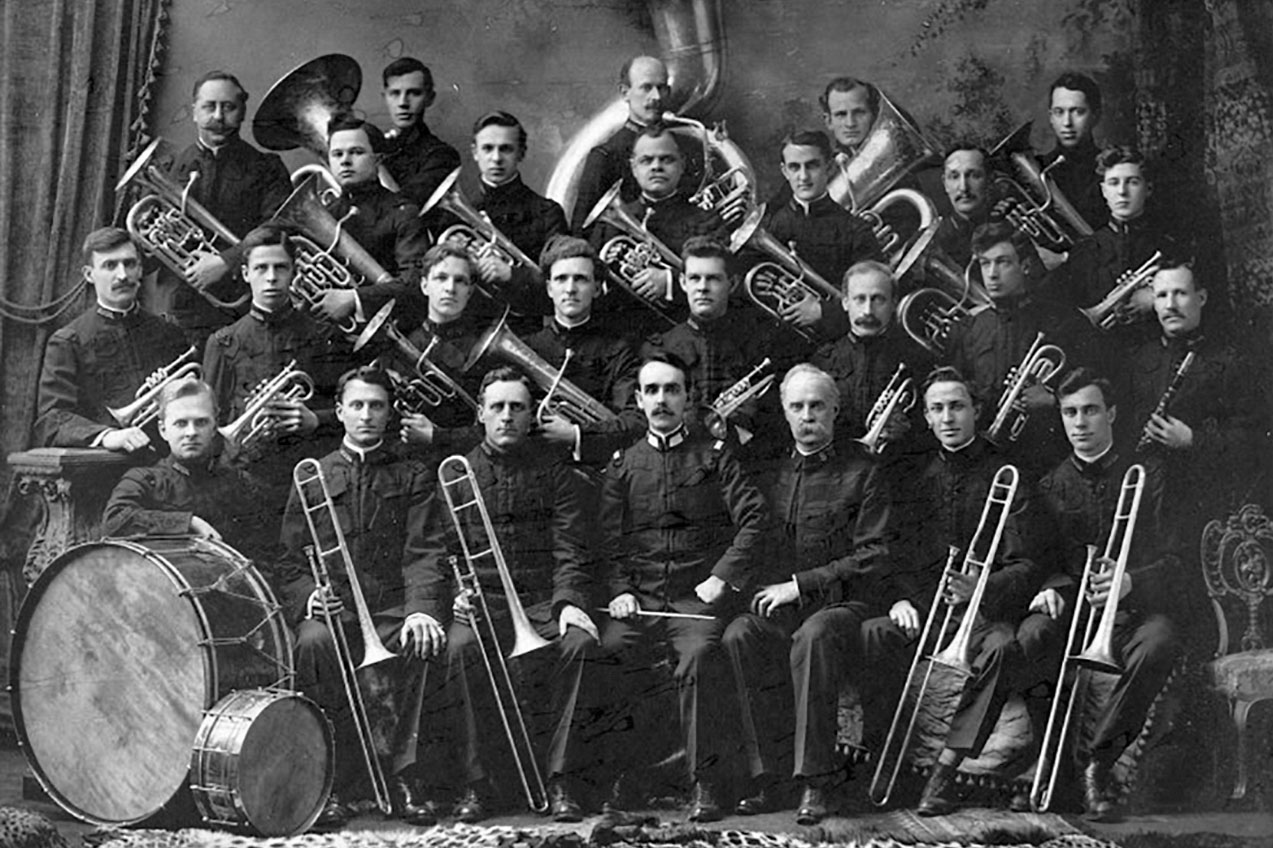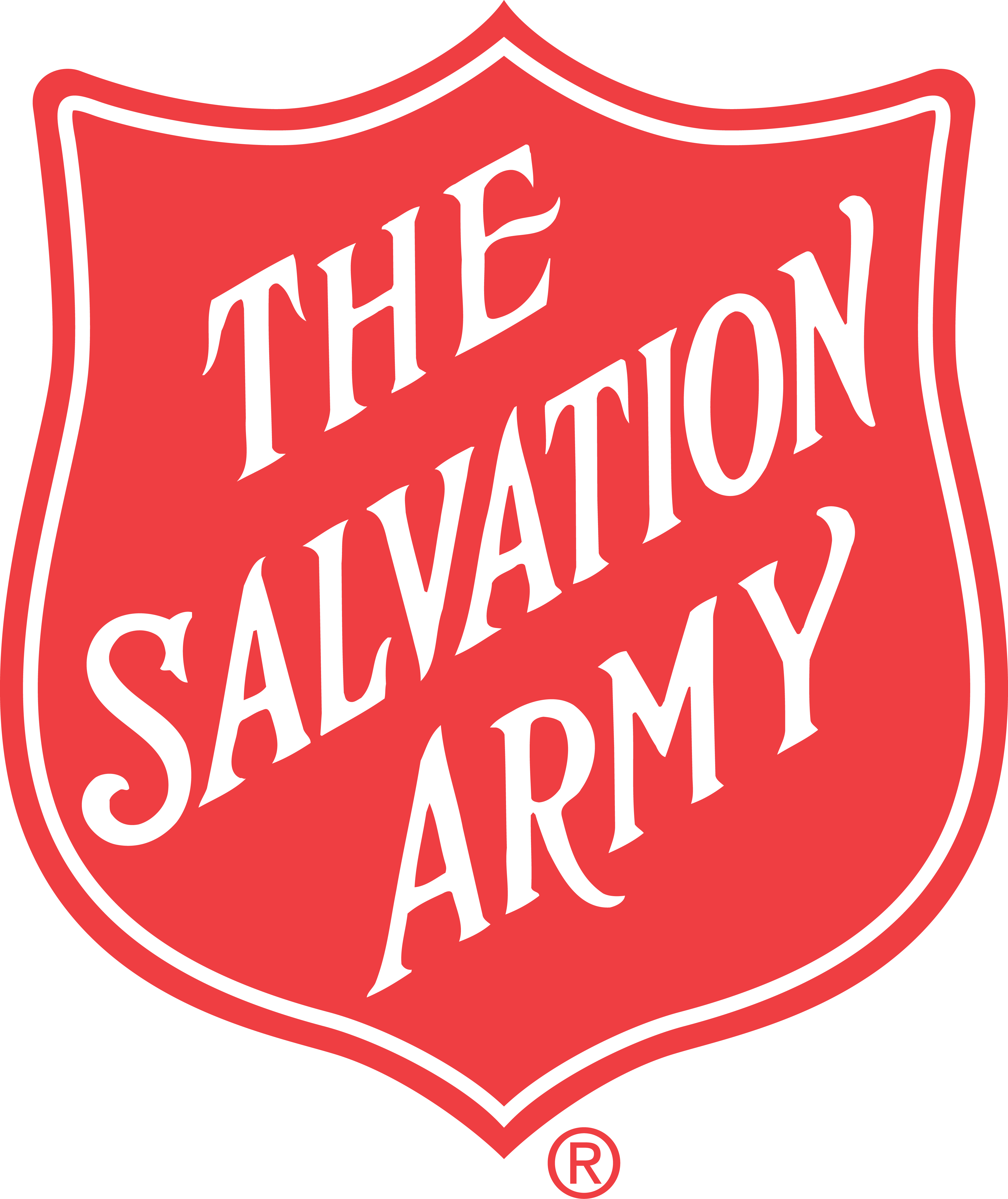And the New York Staff Band Plays On
by Guest

Imagine you are sitting in a Salvation Army sanctuary or a public auditorium—perhaps even an Adult Rehabilitation Center chapel. The emcee announces, “Ladies and gentlemen, please welcome the members of the New York Staff Band!” Jubilant applause greets the band as they take their place on the platform, turned out in their sublime red festival tunics and polished black shoes. The bandmaster acknowledges the audience, gives a Salvation Army salute (because it’s all for the Glory of God), seats the band, and lowers his baton with the downbeat of the first note.
Over the next hour or so you are transported—by the thrill of a well-played technical festival piece, the soaring emotion of a band devotional incorporating a familiar hymn tune, the punchiness of a classic Salvation Army march. There is nothing quite like hearing the New York Staff Band (NYSB) live in concert.
Instrumental
For 138 years, the NYSB has served as the musical cornerstone of The Salvation Army in the United States. It predates the official formation of the USA Eastern Territory by over 30 years. How did such an amazing group of talented players get started all those years ago? The leader of The Salvation Army in the U.S. in 1887, Commissioner Ballington Booth (known as the “Marshal”) decided to organize a “staff band” at headquarters, then located at 111 Reade Street in New York City. Noted band historian Ronald W. Holz writes how the Marshal wanted the newly formed staff band to achieve three things: (1) to attract more public notice of his troops’ evangelistic efforts and provide a morale boost for his recently reorganized Army; (2) to be a model of good music-making for developing bands across the nation; and (3) to supply an effective, mobile backup force for major public appearances and fundraising campaigns.
In a War Cry magazine article from this time, Marshal Booth offered a description of the newly formed band: “A large staff band has been started at our center in New York with a sure prospect of success. All the bandsmen are saved. They are commissioned and will wear a special white uniform helmet. Cheer up, you silent corps; with so many instrumentalists at headquarters you will soon have a boom.”
The band’s first performance took place in Brooklyn at the Lyceum theater on June 18, 1887, in celebration of the Army’s seventh anniversary in America.
Evangeline’s band
Think of what the group has been through in its century-plus history. When the band started, the light bulb was only 8 years old. The band traveled mostly by train; automobiles and planes would come in due time. They endured all sorts of societal changes and changes within The Salvation Army, coming to prominence under the leadership of Evangeline Booth, who featured the band heavily in her many evangelical campaigns during her time as national commander (1904–1934). She was the most musical of all Salvation Army leaders, so it was fitting that she saw the NYSB as “her” band.
When the Centennial Memorial Temple was dedicated in 1930, as part of the new National Headquarters for The Salvation Army, the NYSB played there nearly every Friday and Sunday evening in worship meetings known as Friday/Sunday Evening at the Temple (FETs and SETs, as some will remember). This was in some respects the glory days of the NYSB, when they were guest conducted by amazing composers such as Eric Ball, Erik Leidzén, and even John Philip Sousa—America’s “March King.” They were the musical accompaniment for every commissioning, every congress, and nearly every Old Orchard Beach camp meeting.
Band members had to be musically skilled and, perhaps even more important, committed to the utmost. Even today, they must attend weekly rehearsals at Territorial Headquarters and be available for at least one duty weekend per month.
Sustained notes
From its very first radio recording in 1922 to its most recent album in 2024 (The Invitation), the NYSB has used every form of media to convey its musical message. Innovative pieces like “The Creation Story,” which premiered at Old Orchard Beach a few years ago, have used video and audio alongside the band’s live performance, resulting in a fresh experience. The NYSB always seeks to engage its present-day listeners with styles and compositions that are contemporary and recognizable.
Besides brass music the NYSB is also known for its chorus. In 1889 the band, with just 15 members, formed a singing brigade. A War Cry article from 1907 said “staff bandsmen not only know how to play but to pray, but we must add a third qualification which is by no means least for they can also sing!” For years the Male Chorus delighted its listeners with superb singing. When women joined the NYSB in 1986 (after nearly a century-long hiatus), it became known as the Band Chorus. A wonderful tradition now is to end each NYSB performance with the band singing William Bearchell’s stunning arrangement of “Rock of Ages.” Notable chorus leaders have included Major Thomas Mack, Gordon Ward, and Dr. Dorothy Gates.
The band has faced its share of obstacles, which Holz explores in The Proclaimers, his history of the NYSB: everything from the events of the Great Depression and two world wars to conflict between Army leaders and bandmasters to the changing whims of society. Fortunately, the faith in Jesus Christ that all players must joyfully profess builds a spirit of unity and camaraderie among band members past and present. They are not just colleagues—they are truly family, supporting one another through the triumphs and the pitfalls of life.
The NYSB is the oldest Salvation Army staff band in continuous existence. In 2025 it is still going strong, attracting new members who want to offer service to God through the divine gift of music. Its web page notes: “The NYSB is just as comfortable playing at an Adult Rehabilitation Center or local SA community center as … giving sacred concerts in some of the world’s finest venues. … Their music making serves as an arm of The Salvation Army’s compassionate ministry while keeping true to the highest purposes of sacred music—giving praise and glory to God.”
If you haven’t heard the NYSB live in concert, don’t miss the opportunity to do so. You may just become a lifelong fan.
The Bandmasters
Whether their tenure lasted just a few months or more than a decade, the leaders of the NYSB have always reflected the highest standards of musicality and excellence.
BM Keep, 1887
Major Wray, 1887–1888
Charles Miles, 1888–1890
Walter Duncan, 1890–1892
William Bridgen, 1892
Edward Trumble, 1892–1896
Charles Anderson, 1897–1898, 1898–1907
Charles Straubel, 1898
Robert Griffith, 1907–1912
George Darby, 1912–1931
J. Stanley Sheppard, 1931–1932
William Broughton, 1932–1935
George Granger, 1935–1945
William Bearchell, 1945–1951
William Slater, 1951–1955
Richard E. Holz, 1955–1963
Vernon Post, 1963–1972
Derek Smith, 1972–1986
Brian A. Bowen, 1986–1992
Ronald Waiksnoris, 1992–2016
Derek Lance, 2016 to present
by Rob Jeffery, director of the USA Eastern Territory’s Heritage Museum

